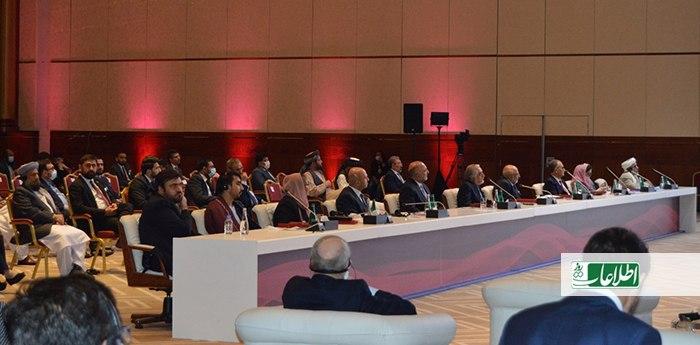The long-awaited intra –Afghan peace talks finally kicked off between the Afghan and Taliban peace delegations in luxurious Ritz-Carlton residence in coastal city of Doha on September 12. The dialogue initially planned to start in early March, was repeatedly postponed due to fundamental disagreements on prisoner swaps between the warring sides.
A stalemate, adherence to further violence and upheaval, can no longer produce any leverage and desired outcome for any of the two sides. It is high time that military offenses are gradually substituted with goodwill gestures, paving the way for a permanent cease-fire, and cessation of violence. In retrospect, the 20-year long fighting between the Taliban and the Afghan military forces did not lead to a resounding victory for any side.
The key step in conflict resolution begins with mutual trust and comprehensive analysis of all outstanding issues up for discussion. It is hard to imagine how a short-term plan created at the highest diplomatic level can solve all of the dilemmas of securing peace and eradicating violence when fighting has been going on for two decades.
A peace that is imposed on people from above is a short-lived peace, but a peace that comes from the people is a lasting peace.
The terrible reality of the dynamics of the recent violence confirms that a national peace must have its foundations in local peace. The idea of eliciting plans from locals is very imperative in forming a constructive dialogue on a larger scale. After all, it is the Afghans, who are vehemently victimized by rampant violence and indiscriminate killings. We all remember that one of the principle reasons that the UN initiated peace efforts under late Benon Sevan between the Mujahedeen and Dr. Najibullah government failed was not including people’s aspirations in the process, leading to a ferocious civil war in the country in 1992.
A peace that is imposed on people from above is a short-lived peace, but a peace that comes from the people is a lasting peace.
The underlying factor surrounding the successful conclusion of this historic opportunity greatly depends on faithful intentions, and exceptional concessions from both parties. Afghanistan has been suffering ruthless bloodshed for a thick amount of time, a peaceful settlement to the prevailing status quo is long due to the ordinary Afghans both within and outside the country.
The stature of Afghanistan remaining an Islamic republic is widely supported by the international community as a guarantor for future relations and critical financial assistance in the long run. It is evident that any amendments in the Afghan constitution should happen with an aim to preserve the spirit of a constitutional rule and its continuity. However, accessing a permanent peace rightly deserves any affordable changes within any bureaucratic processes including the national constitution.
It is apparent that the running dialogue on peace is definitely going to be lengthy and accompanied with expected hurdles and challenges ahead. It is not an internal undertaking healed with indigenous remedy, but consist a pool of conversely scattered regional and international stakeholders with prospective national security and economic interests at stake too. The principal parties, both the Afghan government and the Taliban, can only bridge the gap, and provide assurances in luring these stakeholders for a common cause, and that is of peace and stability for the region within the Afghan peace context.
The frustration caused by the Afghan turmoil and instability in driving substantial economic opportunities out of the region is creating an environment of cooperation and eagerness in making the ongoing peace dialogue a success story. The understanding that a peaceful Afghanistan can play a rather positive contribution in regional prosperity is finding its way into the integral policies of these potential stakeholders. A prosper and peaceful Afghanistan undoubtedly outweighs the misery and instability that an unstable Afghanistan poses to its neighbors and the region as a whole.
One of the key factors that could accelerate progress in the Intra-Afghan dialogue is adherence to the ground realities in today’s Afghanistan. The country in spite of all its concurrent problems with endemic corruption, mal-governance and cultivation ground for world narcotics has also transformed in many spectrums. The indispensable revolution in awareness among the millennial generation of Afghanistan, and a shared consensus in preserving the tangible gains in the last two decades should dominate any prospective settlement.
Now that at least the Taliban and the Afghan government technical teams are working out the agenda and making progress on the actual talks, one can remain hopeful on a positive outcome along the way. US Secretary of State Mike Pompeo, and US Special Representative for Afghanistan Reconciliation Zalmay Khalilzad, reiterated on the importance of this historic chance for peace and urged the negotiators to reach an acceptable agreement for the Afghans as a key contingent in receiving aid from the US in the future.
Finally yet importantly, strategic peace building demands building trust and relationship with a focus on robust conflict analysis, getting the right people in mapping the peace process as mediators. It is very important to understand that for any given peace efforts to gain momentum, it is vital to practice strategic patience and avoid any write-offs before deep discussions. Should Afghanistan see the light of peace, there are certain elements in Taliban’s model that can help a future power sharing setup accelerate curbing corruption, reform judicial shortcomings and above all sustainable security for ordinary Afghans.
Naser Koshan is a DC based freelance. He follows politics, peace and conflict in Afghanistan.




